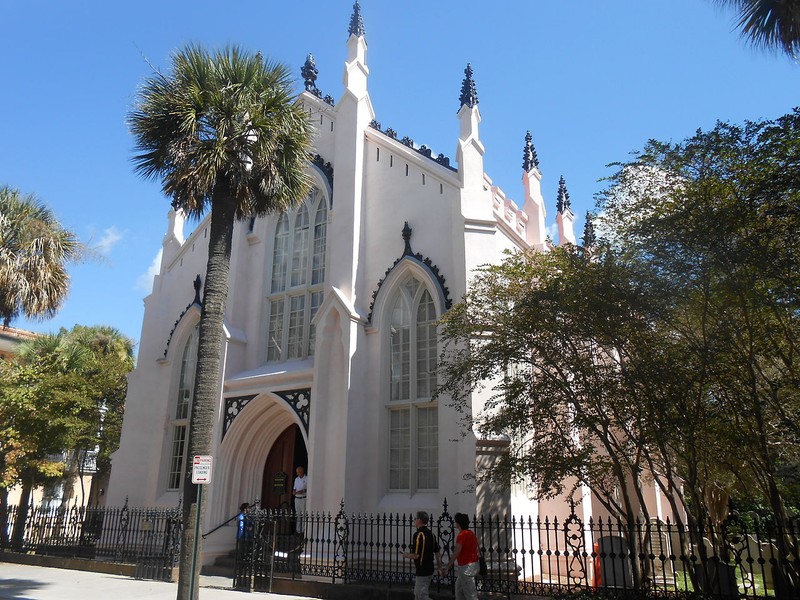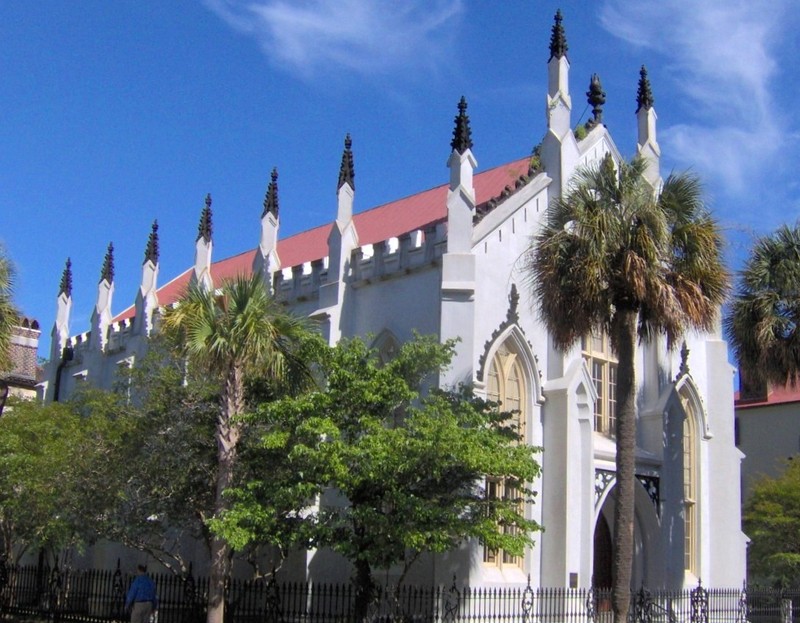Huguenot Church
Introduction
Text-to-speech Audio
Images
Huguenot Church was the first Gothic Revival building constructed in Charleston. It was completed in 1845 and is a National Historic Landmark.


Backstory and Context
Text-to-speech Audio
Huguenots were followers of theologian and pastor John Calvin (1509-1564), who was born in France (his name in French is Jehan Cauvin). Calvin was one of the major thinkers during the Protestant Reformation, which was a movement that challenged the religious and political authority of the Catholic Church in the 16th and 17th centuries. French followers of Calvinism believed that salvation could be achieved through one's own faith and that individuals could interpret the scriptures. These beliefs contradicted the authority of the Catholic Church and the French King, who was Catholic. As a result of this threat, Protestants in France and around Europe were persecuted and forced to flee.
While many relocated to Germany, the Netherlands, and England, a large number immigrated to British territories in the Americas, including the Carolinas (some even went to South Africa). They also arrived in Virginia, New York, and Pennsylvania. Huguenots were often skilled craftsmen, merchants, and artisans. Given these skills and talents, Huguenots were usually welcomed wherever they settled and quickly assimilated into existing communities.
Forty five Huguenots arrived in Charleston in 1680 and hundreds more would make the journey by 1700. It is unclear when the first church was built, but it was destroyed in 1796 by a fire. The next church was built in 1800 and later dismantled in 1844 to make way for the current church, which was completed in 1845. For many years, church services were held in French but today this only occurs once a year. The congregation is independent and not affiliated with a governing body.
Sources
"A History of the Huguenot Church." Huguenot Church. Accessed February 23, 2021. https://www.huguenot-church.org/history.html.
Stephenson, Tray & Kearse, Bernard. "The Huguenot Church." National Park Service - National Register of Historic Places Nomination Form. https://npgallery.nps.gov/GetAsset/220d2155-e9a6-45d2-9927-be32faeb0c8c.
"Who Were the Huguenots." National Huguenot Society. Accessed February 23, 2021. https://nationalhuguenotsociety.org/who-were-the-huguenots.
Both images via Wikimedia Commons: https://commons.wikimedia.org/wiki/Category:Huguenot_Church_(Charleston,_South_Carolina)
